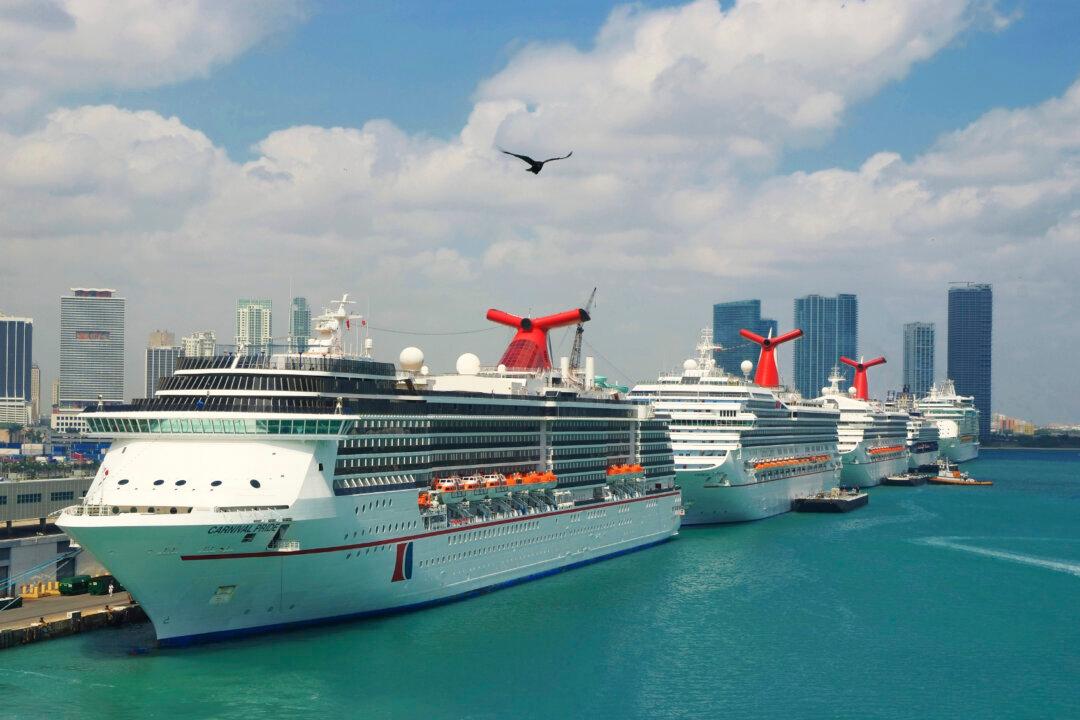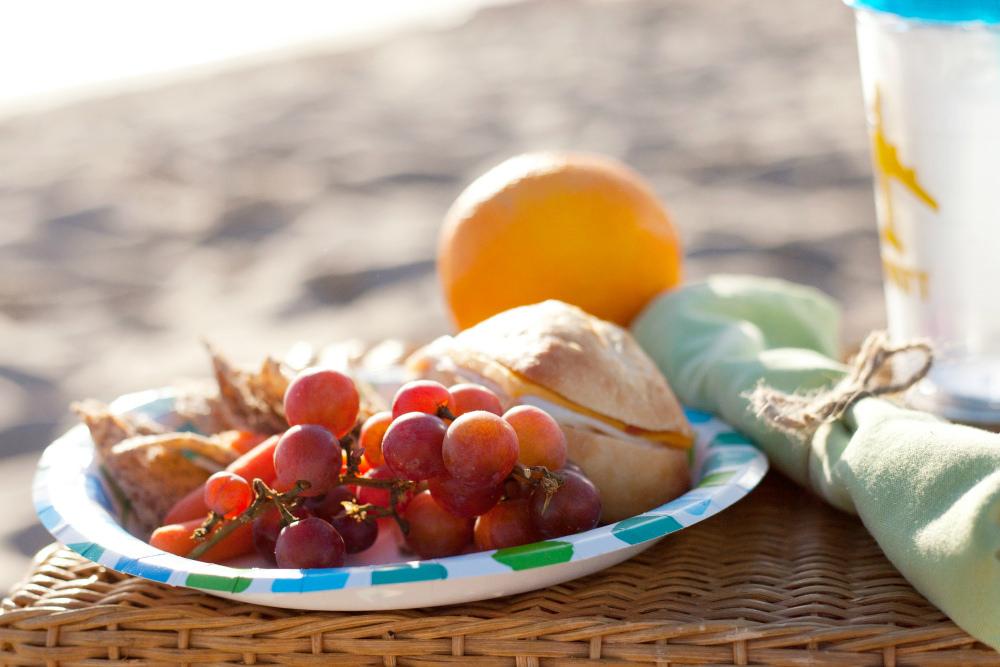Forget the tragedy of the Titanic, and the even more recent 2012 Costa Concordia disaster that saw a cruise ship capsize and sink–people are not being put off travelling the world by sea, and who can really blame them?
We’ve all seen those adverts. You know, the ones with the beaming couple that are silhouetted by clear blue skies and crystal clear sea. The same adverts that show people relaxing back on sun loungers as they advertise the most breathtakingly luxurious tropical destinations. Peals of happy laughter are the background soundtrack to a voice-over who boasts that this holiday is one that the whole family will love. And what’s not to love with the endless list of first class entertainment, from Michelin-style dining with guest celebrity chefs, to the unforgettable evening entertainment that comes with its chance to don a suit and attend fashionable black tie events? From the impressive swimming pools, the on-board clubs and casinos, to the range of shops and the variety of dance classes, there’s hundreds of things to do in just one place, and of course, being bored on board is something you'll never have to worry about.
But what the ads don’t show is the hidden ugly truth behind cruises, and the devastating impact that they’re having on our oceans, sea life, and environment. While you may be thinking that cruising is a lower carbon method of travel, this is absolutely NOT the case. Here we state our top reasons to never take a cruise holiday.
1. Dumping Poop in the Ocean
There’s really no delicate way of putting this. Yep, we’re talking raw sewage. Apologies if you’ve just eaten, but we’re all familiar with that phrase ‘what goes in must come out’, and if you consider that some of the smaller cruise ships can hold at minimum 2,000 people, 8,000 for the newer, much larger ships, then that’s a LOT of human waste flowing through those pipes. And where do you think its all going? Into our sea of course.
The law states that waste dumped within three nautical miles of any shore must be treated, but if cruise ships are beyond that, they’re allowed to dump that filthy, raw sewage straight into the ocean. And with cruise ships supplying seemingly never ending quantities of food and drink to its guests, this is resulting in 25,000 gallons of sewage waste daily from its toilet systems alone. And that’s without considering the 170,000 gallons of toxic grey water that comes from its sinks, showers, laundry and dry cleaning rooms and its concoctions of shampoos, detergents, oil and pesticides.
It may seem ideal that a cruise ship can house all of these facilities in one place, but what they’re not telling you is that all of that contaminated water and waste is actually being flushed directly into our oceans, and this hazardous waste has a devastating effect on our marine life.
2. The Destruction of Coral Reefs
Despite there being 7,000 coral reefs throughout the world, it has been reported that by 2050, all coral reefs could be extinct and a thing of memory alone. Considering that 7 years later the use of cruise ships is greater than ever, its fair to say that they, along with global warming, are making a serious impact here. With their traffic, unethical waste disposal, and their pollution of various other forms, there can be little doubt cruise ships are having a hugely negative impact on the survival of the coral reef.
Just one example of coral reef destruction took place when a single Norwegian Cruise Line ship shockingly destroyed 80 per cent of a coral reef just off of Cancun, Mexico. And with an estimated 400 yearly visits to Cancun, its unavoidable that further accidents will continue to happen there, and anywhere else cruise ships are present in droves.
3. Surprisingly, Air Pollution
Cruise ships have recently been referred to as ‘floating cities’ and like our own cities, air pollution is inevitable in a world where such a thing isn’t regularly controlled.
While many seem to regard cruisers as being less polluting than planes, the fact is that per passenger, cruises are actually polluting in terms of their carbon footprint than flying. In fact, a cruiseliner such as Queen Mary 2 emits 0.43kg of CO2 per passenger mile, compared with 0.257kg for a long-haul flight , even allowing for the further damage of emissions being produced in the upper atmosphere. Sometimes our instincts about what’s best for the environment are wrong.
What’s more, cruise liners run on nasty diesel; responsible for breathing problems and cancer. Moreover, even when they’re docked, ships continue running dirty diesel engines in order to continue providing electrical power to the passengers and crew choosing to stay on the ship. These engines give off nitrogen oxides, sulfur oxides, and carbon dioxide, and we don’t need to understand what each of these does singularly to still know that it is extremely damaging for human health.
Sulfur dioxide alone, produced from the burning of coal and oil, is associated with asthma and chronic bronchitis. Although we as humans can be more resilient to sulfur dioxide pollution, creatures trying to survive among us aren’t so lucky, and it even has an impact on our trees. For example, the amount of toxic air that a human can handle is higher than that of a tree, meaning that sulfur oxides will have destructive results especially on vegetation, and the deterioration on soil. And if that isn’t scary enough, another comparison to shock you shows that in just one day at sea, a cruise ship will emit more sulfur dioxide than 13 million cars, and create more soot than 1 million cars.
4. Too Many People! Tourist Damage
It’s to be expected that when a cruise ship docks, there is going to be an influx of tourists getting off that ship, and spreading out across the destination like wildfire. And lets just put that into perspective. If a cruise ship holding between 2-8,000 people suddenly gets off the same ship, yep, that’s a helluva lot of tourists.
Tourists can have a huge impact in coastal towns, due to the fact they start adding to the pollution, waste and water needs of the local population, and if the place these tourists are visiting is small, you can imagine the kind of pressure and strain that that mass amount of tourists will be putting on the residents of the small town.
Many places have tried to cater to tourists and capitalize on their arrival. But this of course comes at a cost, with many areas having developments created especially for tourists, including opening beaches up for them to relax on, and piers for tourists to walk along being constructed. But this over development on behalf of tourism has a huge impact on the already fragile marine ecosystems, with mangrove forests being removed to make way for those beaches, and structures being built directly on top of already fragile coral reefs. Large amounts of tourists visiting beaches also disturbs already endangered marine animals such as turtles from nesting due to the busy actions of their beaches.
The mass amounts of visiting tourists in some places will also have huge impacts on the land itself: already sinking Venice has threatened to ban cruise ships as they say the bombarding of the town by thousands of cruise passengers at once is actually accelerating the sinking.
5. Their Garbage Disposal is Crap
Like the sheer volume of sewage waste that accumulates on a cruise ship, its also easy to imagine the vast amounts of garbage waste that builds up. And where does all this garbage get tossed?
Just last year it was reported that a cruise ship sailing off the coast of Brazil was caught offloading black bin liners full of plastic, right into the ocean. As it’s normally done in the dead of night with no feasible way of having any kind of control over it, we just don’t know how many cruise ships toss their rubbish overboard.
But it has been noted by residents of coastal towns where cruises are frequent that there is an increase in the plastic that is washing up on their shores than there ever has been before. And many restaurant and bar owners have spoken openly about knowing exactly where that garbage comes from: yep, cruise ships.
And I’m sure you all know the devastating impact plastic is having on our marine life: sea animals often eat plastic, mistaking it for food, and die. They get entangled in plastic which restricts their movement and often cuts into their skin. In short, animals are fighting for survival due to items that shouldn’t be polluting their waters.
6. Ballast Water Kills Everything
A ballast water system is responsible for compensating in the change of cargo load on board a cruise ship. With vast amounts of this water being used, the capacity on the larger ships sometimes totaling gallons of water in the millions, the tanks allow the cruise ship to pump water in and out depending on things like cargo load and the weather conditions. Ballast water will be taken in on one region, after a ship discharges waste water, or unloads cargo, and the ballast water will be discharged at the next port so that new cargo can be loaded. The need for a ballast system is so that the cruise ships can carry light or heavy loads all whilst maintaining an ideal buoyancy and to be able to maintain a handle in conditions of various forms, such as unexpected weather changes.
But ballast water is far from being friendly to our marine environments as invasive species can embed themselves within the water, and when they get sucked up at one place and dumped out at another by these massive cruisers, their nastiness just spreads. And with researchers claiming that one third of all documented invasive plants and animals are able to travel within ballast water tanks, chlorine, cruisers then try to ’solve' the problem by using bleach and another toxic chemicals to kill off these species. But guess what? They kill off ALL species! Consequently, cruisers have a devastating impact on all aquatic life living near any of the ballast water discharge points. Given that cruise ships go to touristy places of natural beauty, that means that natural beauty is being killed off.
7. They Kill and Injure Whales and Dolphins
Many people hang over the rails and try to see if they can spot whales or dolphins as their cruise ships go by. But what many of them aren’t aware of is that the massive ship they’re holidaying on is often responsible for injuring, and in more severe cases, killing whales when their ships collide with them. It’s thought that due to the resilience and size of the much larger cruise ships the impact when hitting a whale– even the larger whale species–goes unnoticed and in turn, the injured whales go unreported.
But in 2010 it was reported that an unusually high number of humpback whales were found dead. Two whales in particular were found to have injuries consistent with high impact blunt force trauma, resulting in skull fractures. In both these cases, it was determined that vessel collision was the cause of their death.
Whilst fin whales, humpback whales, and killer whales are known as being the most common whales involved in collisions with vessels, in 2011 researchers found evidence of ’ship strikes’ among much smaller cetaceans too. Pacific white-sided dolphins were among the ones that displayed scars and injuries seeming to be inflicted from a vessel. One animal had a severed dorsal fin, and other dolphins were found to have propeller scars over their backs.
8. They’re a Huge Eyesore
This may not be the most serious reason on the list, but it IS one to consider. Imagine you’re there in a place of outstanding beauty. There’s a glorious sunset, the silhouettes of palm trees and the gentle sighing of waves hitting the shore, whilst pelicans gather on rocks. Suddenly, you hear what sounds like a massive truck horn and you see black smoke on the horizon, just before a cruise ship the size of a small skyscraper appears from behind that mountain and totally blocks your view. Whilst those on the ship may not be aware of how massive and ugly cruisers are, the fact is, their very size alone is enough to make many who live on coastal areas demand they be banned, as they completely obliterate what would normally be stunning views.
The bottom line? If you love animals, value the planet and want to preserve spots of beauty for the next generation, just say NO to any kind of cruise.
This article was written by Lora O'Brien and originally published on EluxeMagazine.com. Read the original here.




